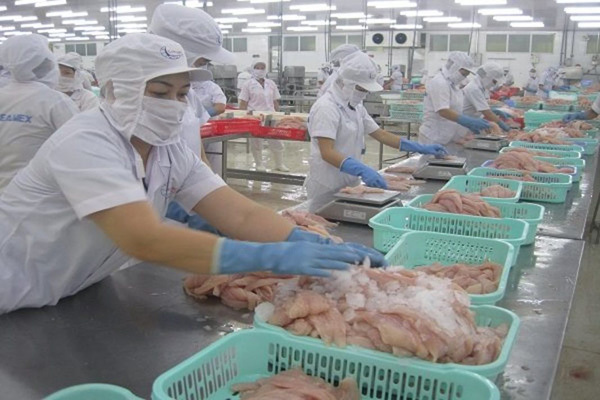 |
| Workers of a local firm process tra fish for export. – SGT Photo: Trung Chanh |
The virus was detected in the packaging of the products, inside containers and in the seafood products.
According to Nafiqad, besides suspending import procedures, China has repeatedly launched online inspections into enterprises whose seafood exports have been found to carry the virus.
With the current developments of the Covid-19 pandemic in Vietnam and China’s “zero Covid” policy, if prompt solutions are not found, the number of shipments to be returned to Vietnam will be larger, causing heavy losses and damaging the prestige of Vietnam’s fishery sector.
In addition, competent Chinese agencies are likely to tighten anti-pandemic measures.
Therefore, Nafiqad asked local firms to enhance the prevention and control of the coronavirus during the production and export of seafood to China. Especially, employees packaging and handling products must wear face masks during work hours, regularly wash their hands and undergo Covid tests periodically.
Local seafood exporters should also study and follow the guidelines on the disinfection of the coronavirus at producers and traders of frozen products issued by the General Administration of Customs of China.
According to statistics from the Vietnam Association of Seafood Exporters and Producers, Vietnam exported US$1.5 billion worth of seafood products in the first two months of the year, surging 51% year-on-year. Of the total, US$168 million worth of seafood was exported to China, soaring 91% over last year’s period.
Source: SGT

Decrease in in seafood exports expected as a result of new Chinese policy
Vietnam’s seafood exports to China are likely to decrease sharply as Chinese customs are tightening control over imports.

The 'test' for the future of seafood exports
If Vietnam does not focus on removing the IUU (Illegal, unreported and unregulated fishing) yellow card and violations continue, it is very likely that the EC will switch from yellow card to red card.